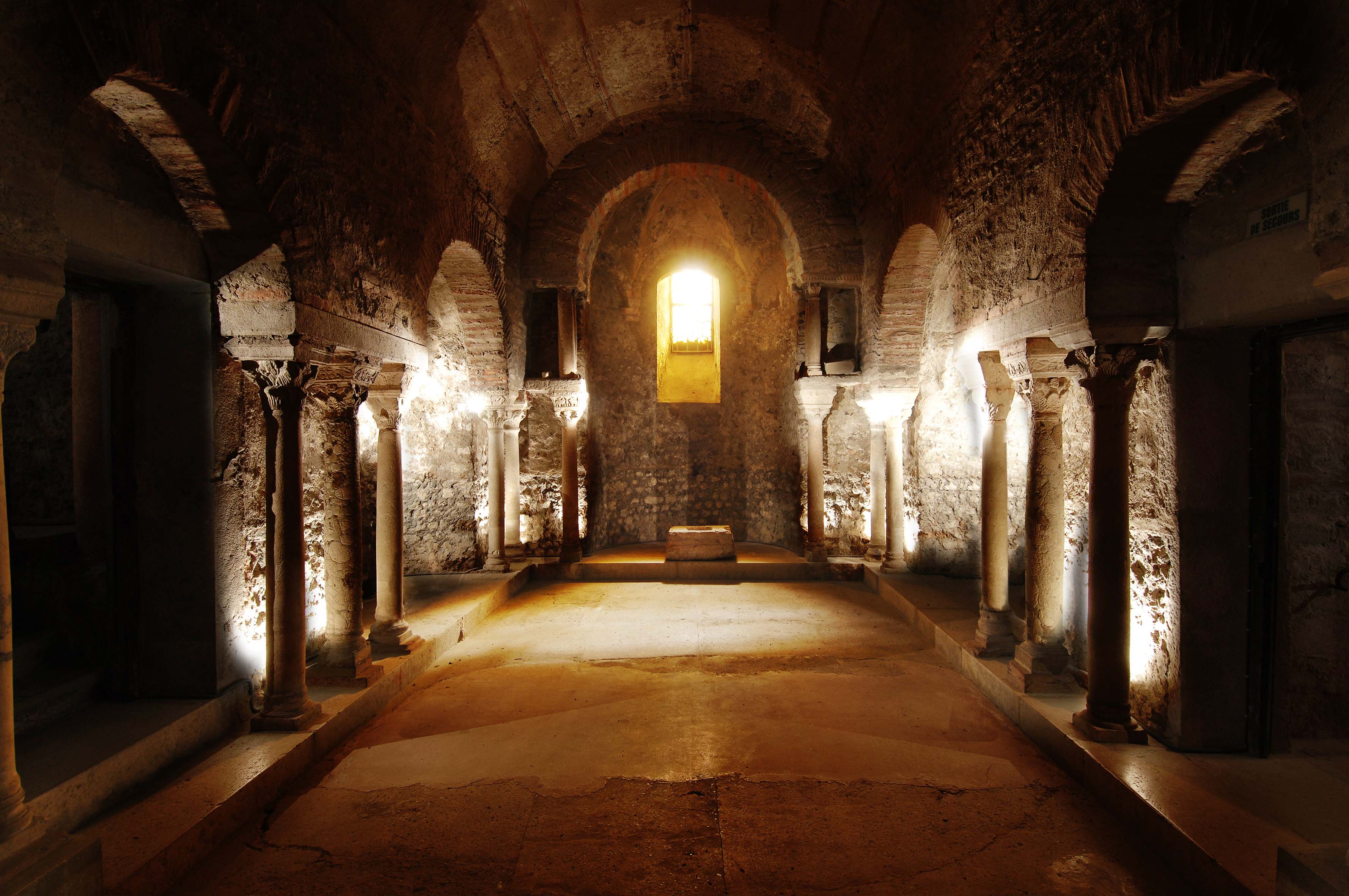Grenoble Archaeological Museum on:
[Wikipedia]
[Google]
[Amazon]
Grenoble Archaeological Museum is a museum located in

Grenoble tourisme, France
{{Authority control Museums established in 1846 Museums in Grenoble Archaeological museums in France Museums of ancient Rome in France Archaeological sites in France Former churches in France Monuments historiques of Isère Merovingian architecture Romanesque architecture in France 1846 establishments in France
Grenoble
lat, Gratianopolis
, commune status = Prefecture and commune
, image = Panorama grenoble.png
, image size =
, caption = From upper left: Panorama of the city, Grenoble’s cable cars, place Saint- ...
, France. It occupies the historic site of Saint-Laurent at the foot of the Bastille
The Bastille (, ) was a fortress in Paris, known formally as the Bastille Saint-Antoine. It played an important role in the internal conflicts of France and for most of its history was used as a state prison by the kings of France. It was stor ...
on the right bank of the Isère.
The building
Saint-Laurent church was built on the remains of aGallo-Roman
Gallo-Roman culture was a consequence of the Romanization of Gauls under the rule of the Roman Empire. It was characterized by the Gaulish adoption or adaptation of Roman culture, language, morals and way of life in a uniquely Gaulish context ...
necropolis. The church itself is essentially Romanesque, but it is characterised by a complex layering of buildings and structures, among which the hidden gem is the crypt which dates from the 6th century.

Conservation
The crypt was classified as ahistoric monument
A monument is a type of structure that was explicitly created to commemorate a person or event, or which has become relevant to a social group as a part of their remembrance of historic times or cultural heritage, due to its artistic, his ...
in 1850. Protection was extended to other parts of the church and, in 1977, the entire site.
The church was deconsecrated in 1983 in order to become first an archaeological site and then in 1986 a museum.
History
A priory associated with the church was closed in 1790 after which St Laurent had the status of aparish church
A parish church (or parochial church) in Christianity is the church which acts as the religious centre of a parish. In many parts of the world, especially in rural areas, the parish church may play a significant role in community activities, ...
.
The site has been studied since the beginning of the 19th century. In 1803, the discovery of the Merovingian
The Merovingian dynasty () was the ruling family of the Franks from the middle of the 5th century until 751. They first appear as "Kings of the Franks" in the Roman army of northern Gaul. By 509 they had united all the Franks and northern Gauli ...
crypt attracted attention. In the first half of the nineteenth century, three men revived the architectural interest of this church:
* archaeologist Jacques Joseph Champollion-Figeac
* inspector general of ancient monuments Prosper Mérimée
Prosper Mérimée (; 28 September 1803 – 23 September 1870) was a French writer in the movement of Romanticism, and one of the pioneers of the novella, a short novel or long short story. He was also a noted archaeologist and historian, and a ...
* architect Pierre Manguin.
A first museum was created in 1846 between the church of St Laurent and a house occupied by the industrialist Xavier Jouvin
Xavier or Xabier may refer to:
Place
* Xavier, Spain
People
* Xavier (surname)
* Xavier (given name)
* Francis Xavier (1506–1552), Catholic saint
** St. Francis Xavier (disambiguation)
* St. Xavier (disambiguation)
* Xavier (footballer, born ...
. It consisted primarily of headstones covered with inscriptions, dating from the Gallo-Roman period of Cularo
Cularo was the name of the Gallic city which evolved into modern Grenoble, until 381 when it was renamed Gratianopolis in honor of Roman emperor Gratian.
The first reference to Grenoble dates back to July 43 BC.''Ad Familiares'', 10, 2Letter 87 ...
.
The entire site is classified as a historic monument since 10 August 1977.
A museum opened in 1986 in the deconsecrated church of St Laurent, but closed from 2003 for work, and reopened to the public in May 2011 with a new original staging.
The church of St. Laurent today is a Romanesque church of the twelfth century. The conservation status of the church funeral (sixth century) excavated in the basement, with its crypt makes it a unique archaeological site in France.
The site, from the early fourth century mausoleums
A mausoleum is an external free-standing building constructed as a monument enclosing the interment space or burial chamber of a deceased person or people. A mausoleum without the person's remains is called a cenotaph. A mausoleum may be consi ...
, has witnessed an architectural constant adaptation to changing attitudes, pagan practices to Christian beliefs.
References
Bibliography
* ''La ville et la mort, Saint-Laurent de Grenoble, 2000 ans de tradition funéraire''. Renée Colardelle. Bibliothèque de l'Antiquité tardive, N° 11, édit. Brepols Publishers, 413 p, 2008.External links
Grenoble tourisme, France
{{Authority control Museums established in 1846 Museums in Grenoble Archaeological museums in France Museums of ancient Rome in France Archaeological sites in France Former churches in France Monuments historiques of Isère Merovingian architecture Romanesque architecture in France 1846 establishments in France